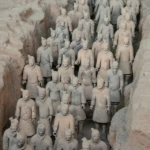Unveiling Albanian Linguistics: The Role of Embryomorphemes in Language Development
Albanian, a unique branch of the Indo-European language family, captivates linguists with its rich history, intricate grammar, and the evolution of its lexicon. Within the study of Albanian linguistics, one intriguing concept gaining traction is that of "embryomorphemes." This term refers to the foundational units of meaning that emerge during the early stages of language development, acting as a critical link between the evolution of language and cognitive growth. This article aims to explore this novel concept and its implications for understanding the Albanian language and linguistics as a whole.
Understanding Embryomorphemes
Embryomorphemes represent the elemental building blocks of language that undergo transformation as children progress in their linguistic abilities. They encapsulate meanings and grammatical functions that are foundational yet not fully formed. In essence, embryomorphemes serve as the scaffolding upon which more complex linguistic structures are built.
In the context of Albanian, these embryonic linguistic units may manifest in the language’s rich system of prefixes and suffixes, which are instrumental in word formation and meaning modification. For instance, the native practice of altering root words through morphological changes reflects the use of these foundational morphemes, enabling speakers to express nuanced ideas while adhering to grammatical norms.
The Albanian Linguistic Landscape
Albanian is categorized into two main dialects: Gheg, spoken in the northern regions, and Tosk, prevalent in the south. The language is characterized by its own set of morphological rules and rich inflectional paradigms, making it a fascinating case study for linguists. Albanian’s historical influences—from Latin and Slavic languages to Greek and Turkish—introduce a diverse array of lexical items, idiomatic expressions, and phonetic variations. Understanding the embryomorphemes in this complex environment entails examining how these foundational units interact with various linguistic elements.
The Role of Embryomorphemes in Language Development
The concept of embryomorphemes is particularly relevant in the study of language acquisition in children. As young Albanian speakers begin to learn their mother tongue, they likely engage with basic morphemes—individual sounds and units of meaning—before mastering more complex structures like sentences and paragraphs.
Research indicates that children initially produce simplified versions of mature words, often omitting prefixes or suffixes that modify meaning. Gradually, as they engage in conversation and receive linguistic input from caregivers, these embryomorphemes become more recognizable and stable anchors within their growing vocabulary. This process not only elucidates how children operationalize language but also reflects improvements in cognitive processing and language understanding.
Linguistic Implications
The exploration of embryomorphemes in Albanian opens new avenues for research and discussion. It posits questions about the relationship between linguistic structure and cognitive development, challenging traditional paradigms of morphological studies.
For instance, understanding the cognitive load associated with different morphemes in Albanian can help educators develop targeted teaching strategies for language learning. Furthermore, it can provide insights into how sociocultural factors influence language use—the interplay of historical context, exposure to diverse linguistic inputs, and the innate cognitive capabilities of learners.
Additionally, this exploration furthers research into dialectal variations. Given the distinct grammatical forms in Gheg and Tosk, investigating how embryomorphemes vary between these dialects could enhance our understanding of dialectology and language change.
Conclusion
The study of embryomorphemes in Albanian linguistics sheds light on how language develops from its most rudimentary forms to complex structures. These foundational units of meaning not only play a vital role in personal language acquisition but also represent broader thematic elements in the evolution of the Albanian language itself.
As researchers continue to unveil the depths of Albanian linguistics, the intersection of cognitive development, morphology, and sociolinguistic factors will undoubtedly contribute to a rich tapestry of understanding that honors the complexity and uniqueness of this language. By focusing on embryomorphemes, linguists can better comprehend the origins of language, the nature of communication, and the ongoing evolution of one of Europe’s oldest languages, providing a fascinating glimpse into the future of linguistic research.
_[modern_footnote_sourcelink]

























Add Comment